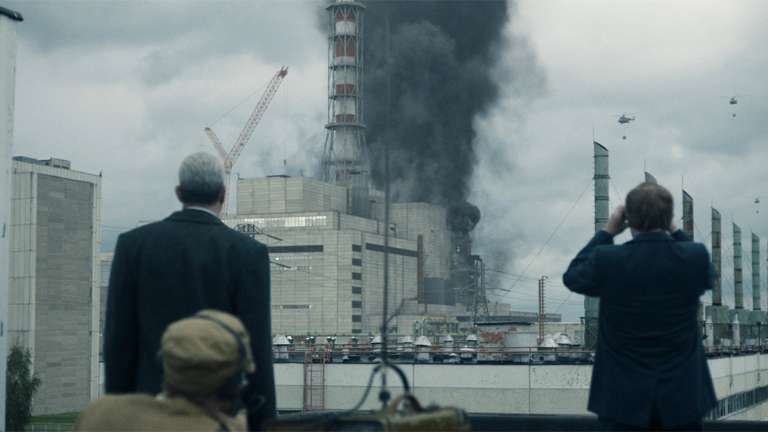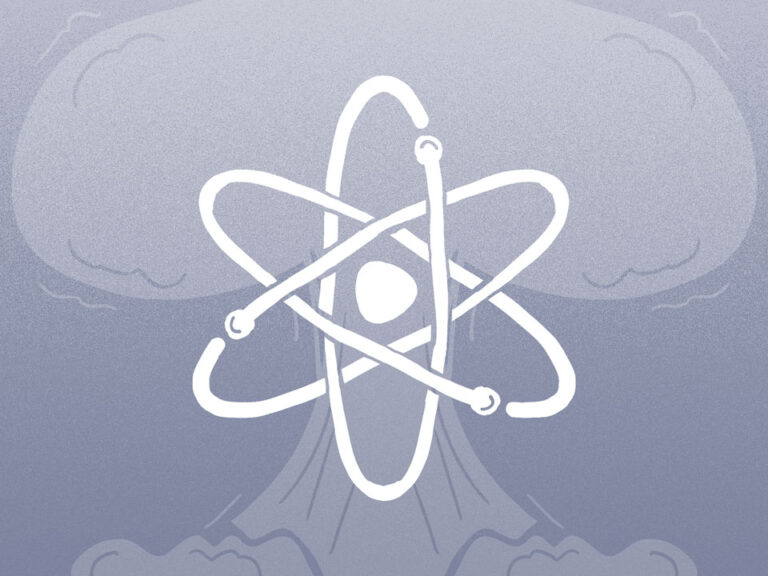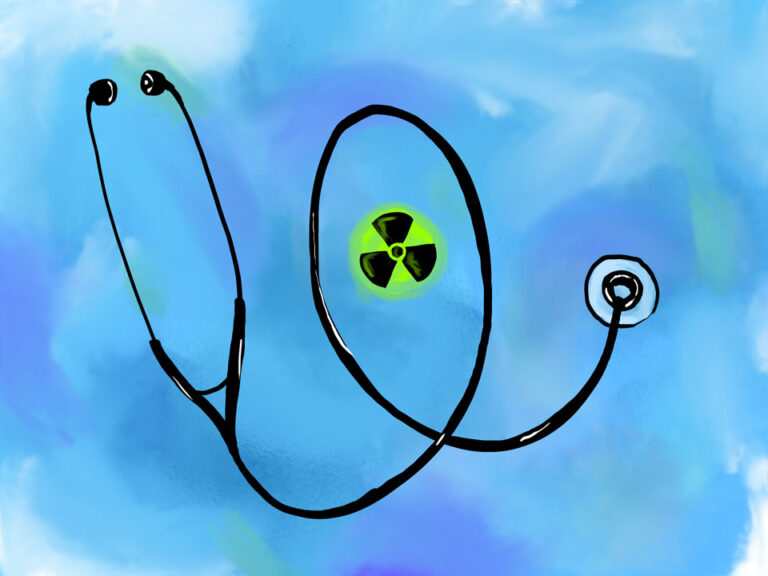Two weeks ago, HBO began screening a five-part series on Monday nights on the Chernobyl nuclear power facility (NPF) accident, which occurred more than 30 years ago on April 26, 1986.
The series focuses predominately on events leading to the accident, the scientific, social and political environments in the Soviet Union at that time and, to a lesser degree, on immediate and long-term medical consequences. The series is strong on the former, but weaker on the latter.
Although the producer and writers have made considerable effort to present a factual account of the accident and its consequences, much of how the story unfolds is fictionalized.
I have no problem with fictionalization. Having tried my hand (entirely unsuccessfully) at screen writing, I am sympathetic to the need to make a story interesting and engaging. Talking heads are OK for Meet the Press, but not for a 5-hour mini-series, especially if you need people to tune-in (perhaps log-in is more accurate today) every Monday for three more weeks to the show and not the local baseball game. This is not the place for complexity or nuance.
My goal in this guest editorial series is to give readers of The Cancer Letter a more nuanced view of what happened, emphasizing the immediate and long-term medical consequences of the Chernobyl NPF accident.
First, I should explain my involvement in the Chernobyl NPF accident. I met Mikhail Gorbachev before April 1986, mostly in passing at the frequent funerals for Soviet ex-general secretaries, including Yuri Andropov and Konstantin Chernenko (who we tried unsuccessfully to get to UCLA for a kidney transplant). I learned of the accident on May 1, when radiation detectors in Sweden traced the source of a radioactive plume to Chernobyl.
Knowing the limited resources available to my Soviet colleagues to deal effectively with an event of this magnitude, I contacted Mr. Gorbachev through Armand Hammer, offering my help and that of my colleagues at the International Bone Marrow Transplant Registry (now the Centre for International Blood and Marrow Research).
Anatoly Dobrynin, Soviet ambassador to the U.S., called me the next day, asking me to come immediately to Moscow. Two weeks later, I recruited two UCLA colleagues (Paul Teraski and Richard Champlin) and one colleague from the Weizmann Institute in Israel (Yair Reisner) to help.
I spent the following two years mostly in the Soviet Union, working with my colleagues at the Institute for Biophysics and Clinical Hospital 6, dealing with a bit more than 200 persons with acute radiation exposures. In the subsequent 30-plus years, I have been involved in several studies of the long-term medical consequences of the accident—initially in the ex-Soviet Union, and later in the Russian Federation, Ukraine and Belorussia; more details as the series progresses.
How did the accident happen?
I spent the next two years mostly in the Soviet Union working with my colleagues at the Institute for Biophysics and Clinical Hospital 6 dealing with a bit more than 200 persons with acute radiation exposures.
Without going too deeply into technical details, let me explain:
First, it’s important to understand the Chernobyl reactor, called an RBMK-type reactor, is rather different from U.S. and European reactors. The reactor core is huge, over 10 times larger.
More importantly, although it uses pressurized water as the coolant, it uses graphite rather than water as the neutron moderator. U.S. and EU regulators rejected this design because of several important safety concerns.
The operators of Reactor 4 at the Chernobyl complex were conducting a power-down exercise, ironically, a safety exercise. The idea is to see how long the pumps, which circulate the coolant (water), will operate after power is lost. Unfortunately, RBMK reactors are highly unstable at low power, because of the control rod design and positive void coefficient, factors that accelerate the nuclear chain reaction and power output if the reactors lose cooling water.
Fissioning the nuclear fuel (235-uranium) in the core of a reactor produces tremendous amounts of heat energy, which is used to convert water to steam used to turn turbines and produce electricity.
Next, the steam is cooled in a pond, river, or ocean and recycled to the reactor. If the reactor core is not cooled, the nuclear fuel which is contained in many zirconium rods will melt (a meltdown). Because cooling is essential, all NPFs have redundant systems to supply electricity to the pumps, which circulate the coolant.
First, there is the electricity generated by turbines at the NPF.
Second, NPFs are connected to the electricity grid so they can import electricity produced off-site at other generating facilities.
Third, should all else fail, there are on-site diesel fuel-driven generators (like some home versions people have) designed to kick-in if options 1 and 2 fail. It’s worth emphasizing no amount of redundancy is foolproof. Witness the Fukushima-Daiichi NPF accident in 2011, where the three systems failed synchronously.
The idea of the Chernobyl safety test was to see how long the on-site turbines would continue spinning and providing electricity after a reactor power-down. This information would be important if terrorists cut-off the NPF from the electricity grid, destroyed the back-up diesel pumps, or both. Jim Armitage and I discuss these scenarios in The New England Journal of Medicine1.
For the safety test, the Chernobyl operators withdrew the graphite moderator rods from the reactor core to speed up neutrons released from fissioning uranium. These faster neutrons will not sustain a chain reaction and the reactor will shut down. When the operators reached a dangerous point in the shutdown process, they received warnings from multiple sensors in the reactor control room.
Unfortunately, as is frequent in human error-precipitated accidents, like many airplane crashes (but not the Boeing 737 Max, where the opposite was so), the operators trusted their judgment rather than readouts from sensors, emergency warnings, and the safety manual. They proceeded on their perception of what was happening in the reactor core. Their subsequent actions were like hitting the accelerator, rather than the brake in their attempt to regain control of the fission reaction. These factors all contributed to an uncontrollable power surge that led to the Chernobyl Reactor 4’s destruction.
The power surge caused a sudden increase in heat, which ruptured some of the pressure tubes containing fuel. The hot fuel particles reacted with water and caused a steam explosion which lifted the 1,000-metric-ton cover off the top of the reactor, rupturing the rest of the pressure tubes, causing a second hydrogen gas explosion (similar to what you may have seen on TV at Fukushima), and destroying the surrounding building.


Because the RBMK-type Chernobyl reactor is so large, it is impossible to encase the reactor core in a containment vessel like most Western-design reactors. So, when the core exploded, the radioactive fuel was exposed to the environment. You may ask why the Soviets had this more dangerous reactor type. The answer is RBMK reactors can produce electricity, but also weapons-grade plutonium. Remember, this was during the Cold War.
When the reactor exploded, the nuclear fuel rods contained 200 or so radionuclides, which accumulated in the core from fissioning uranium. These were scattered over the ground.
I cannot imagine anyone would try to cover this up. It would be like standing in lower Manhattan after destruction of the Twin Towers and pretending there was no problem.
Some radioactive gases like 131-iodine were propelled to a height of over one kilometer (into the lower troposphere) and dispersed by winds, initially towards the northwest but later throughout the Northern Hemisphere (winds of the two hemispheres do not mix).
When emergency personnel arrived to what they thought was a conventional fire caused by the burning graphite, they were exposed to external radiations from the disrupted nuclear fuel, to radioactive gases, and to thermal and chemical injuries. Two workers were killed by the explosions.
One emphasis of the first episode of the miniseries was on the lack of transparency and attempts to cover-up the accident. Neither the writer, producer, nor I were at Chernobyl when the accident occurred; I arrived a few days later.
However, anyone looking at the destroyed reactor building, mass of firefighting equipment, and personnel streaming into the reactor complex—the smoke from the fire clearly visible from Pripyat, about 4 km away etc.—I cannot imagine anyone would try to cover this up.
It would be like standing in lower Manhattan after destruction of the Twin Towers and pretending there was no problem.
All governments try to contain bad news of this type. I am not an apologist for the Soviet government, but I see rather little difference between the initial U.S. government reaction to the Three Mile Island (TMI) accident, the initial Japan government reaction to the Fukushima-Daiichi accident, and the Soviet response to Chernobyl.
All NPFs have firefighting units. When the firefighters entered the Chernobyl complex early morning April 26, 1986, they knew immediately this was not just a typical fire, because of the rapid onset of nausea and emesis.
Many told me of their experience after they were flown to our hospital in Moscow one to two days later. The bottom line is that although the Soviets might not have wanted to broadcast circumstances and extent of the accident, everyone knew it was bad.
In the next installment, I will discuss details of the reaction to these events by the operators and emergency personnel, and the immediate medical consequences.
1 Gale RP, Armitage JO. Are we prepared for nuclear terrorism? N Engl J Med. 2018; 378:2449-50.











